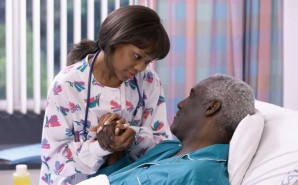Nurses can help ease patient discomfort. While this isn’t exactly news to nurses or patients, two new studies back up this claim in different ways.
New research on nursing was presented this month at the EuroHeartCare 2014 conference in Stavanger, Norway. Researchers from Copenhagen University Hospital in Denmark found that “patients who were told by nurses to imagine that they were in a safe place during cardiac ablation experienced less pain than those who had no mindfulness intervention.”
While the heart of the study focused on nurses who practice holistic healthcare (by guiding patients into a calmer state), it also looked at nursing as a whole.
Here are some of our favorite takeaways from the study:
- Nurse-guided mindfulness could help decrease the pain of an uncomfortable procedure.
- In the study, patients imagined that they were in comfortable, safe locations, such as the beach, while undergoing ablation to treat atrial fibrillation. “Patients told us that visualising their own safe place during the procedure made them feel involved and helped them cope with pain and anxiety,” said Marianne Wetendorff Nørgaard, lead author and a clinical nurse specialist at Copenhagen University Hospital, in a press release.
- “We bring humanity to the patient when we express our own humanity,” said Elda G. Ramirez, Ph.D., RN, and an associate professor of nursing at the University of Texas School of Nursing in Houston.
Another recent study from the University of Exeter Medical School in the U.K. highlights the need for a variety of experts in a hospital setting. The analysis, reported in the uses 15 studies to find that nurses’ readings of blood pressure were lower (-7 mm Hg systolic and -3.8 mm Hg on average) than doctors’.
Though this finds that nurses may get more effective readings, it does not eliminate the “white coat effect,” which “describes an elevation in blood pressure above a patient’s normal levels in association with a clinic or surgery visit” (though there have been disputes as to the best way to measure this effect).
“Nurses’ blood pressure readings are better predictors of early target organ damage in hypertension than doctors’ readings, but they do not eliminate the white coat effect compared with home or ambulatory readings,” wrote the researchers. “Automated office blood pressure readings may yield readings lower than those obtained in the presence of health professionals by reducing (but not abolishing) white coat effects.”
What’s your favorite finding from these studies? Did anything surprise you? Tell us in the comments below!
Source: Healthline.com


















